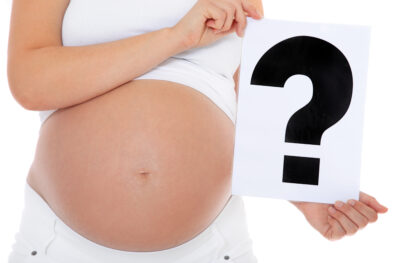Frequently Asked Questions
 Why do women get hemorrhoids during labor and delivery?
Why do women get hemorrhoids during labor and delivery?
Hemorrhoids are very common, especially during childbirth. During pregnancy your blood volume increases. During labor, the pressure inside the veins of the anus is increased by pushing and the passage of the baby through the birth canal. It is this increased venous pressure and over-extension of the anus that is typically responsible for developing painful, external hemorrhoids during childbirth.
How often do external hemorrhoids occur as a result of childbirth?
Delivery-induced hemorrhoids are one of the leading complications of childbirth, a condition that affects between 600,000 and 800,000 women in the U.S. each year.6, 7”
After delivery, why are external hemorrhoids more common than internal hemorrhoids?
If a patient gets hemorrhoids during childbirth, they are almost always external hemorrhoids, not internal hemorrhoids. This is due to the increase in vascular pressure in the anus. Delivery-induced hemorrhoids frequently occur as the head and shoulders breach the birth canal, and almost always within 24 hours of delivery.
Why should I be concerned?
Although hemorrhoids aren’t life-threatening, they can be extremely uncomfortable. Your general well-being after childbirth is important to both you and your baby.
What are hemorrhoids?
Hemorrhoids are swollen or inflamed vascular structures within the anus or anal canal.
What’s the difference between external and internal hemorrhoids?
External hemorrhoids are generally associated with pain while internal hemorrhoids frequently bleed.
What causes external or prolapsed hemorrhoids?
Both internal and external hemorrhoids can be caused by a variety of common situations: constipation, diarrhea, low-fiber diet, straining, genetics, obesity, aging, prolonged sitting and pregnancy.
How are external hemorrhoids treated once they occur?
Hemorrhoids are initially treated with conservative measures like rest, sitz baths, increasing fiber and water intake, topical creams and anti-inflammatory and stool softening medications. Severe cases require surgical intervention.
How long after labor and delivery can external hemorrhoids last?
Pregnancy and labor induced hemorrhoids can resolve themselves within a few weeks or months of delivery. However, some excessively prolapsed or thrombosed hemorrhoids may need to be resolved with surgical procedures.
What can I do to prevent hemorrhoids during my delivery?
Stetrix spent 4 years developing the Labor Guard® device. A clinical study approved by the Food and Drug Administration showed the Labor Guard® product was 99.8% effective in helping prevent external hemorrhoids during vaginal childbirth. The Labor Guard® device is completely external and is not inserted into the anus or rectum. Your caregiver can help you avoid hemorrhoids during childbirth by prescribing the only product that is clinically proven to help prevent this problem.
Who applies the Labor Guard® device?
Federal Law restricts the device to the sale by or on the order of a physician or a practitioner trained in its use. The device may be used by doctors, midwives or labor and delivery nurses that have been trained in its use.
When is the Labor Guard® device applied?
Just prior to pushing—8 to 10 cm of cervical dilation.
How long does it take to apply it?
Trained doctors, midwives or labor and delivery nurses can apply the device in just a couple of minutes.
Where is the Labor Guard® device applied?
The device is actually seated directly on top of the anus. However, due to anatomical movement during childbirth a small amount of perineal contact is normal and doesn’t interfere with the childbirth process.
Is the product invasive or inserted into the anus?
No, the product is completely external and is seated against the anus.
How long is the Labor Guard® device left on?
The device is left on through the end of the second stage of labor, childbirth.
Can the device be removed quickly if needed?
Because the device uses hook and loop fasteners, the product can be removed in a couple of seconds if needed.
What is the Labor Guard® device made of?
The base is made of medical grade polycarbonate, the same material eyeglass lenses are made from. It’s extremely strong and flexible. The hook & loop material is a short weave composite that’s very smooth and is latex free. Biocompatibility testing was conducted on each component of the product. When removed, it doesn’t leave a residue.
What if I already have hemorrhoids before going into labor?
You may be able to use the Labor Guard® product even if you already have hemorrhoids prior to delivery. Your physician can make this determination.
Does birthing position effect the use of the Labor Guard® device?
During childbirth, some facilities leave the patient’s legs in the stirrups while others allow more patient mobility. Excessive movement may simply require the physician to readjust the device.

